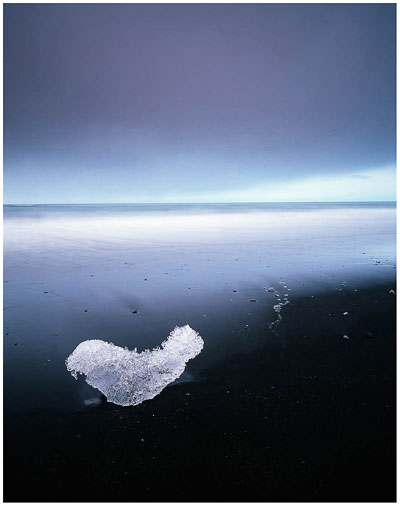Several months ago, I wrote a blog posting about tonal relationships in photographs, and how dark areas of a frame create mystery. This was all spurred on by something I read in Galen Rowell's excellent book 'Inner game'. In it, he had envisioned a time in the future when something like HDR would arrive and he (correctly) suggested that with the power of such a tool, it would be very easy to remove all depth and mystery from an image. He died in 2001, so this was well before the advent of HDR.

But the main point that Galen wrote about in his article, was that he felt that dark areas of an image convey a sense of mystery, because as part of our primal instinct is to associate dark with danger. For example a dark cave or a dark forest would be considered a possible threat to our ancestors.
I bring all this up, as a precursor to what I'd like to discuss in this post.
Dark areas in a photograph should be considered as a welcome dimension, if they do not disturb the harmony of the rest of the image.
A few days ago, I discussed how using Snow in a photograph can create a sense of having a blank canvas, a space where the eye can float freely away (or over). Snow can simplify or distill our compositions down, reduce the landscape to the core elements that we wish our viewer to be attracted to. Similarly, black areas of a frame can be used in exactly the same way.
Take the above shot of my 'ice seal', shot in Iceland in 2011. Part of my attraction to a scene is often the lack of clutter around any interesting objects. This little sculpture was sitting on the beach separated from other ice debris. The black beach acts as a kind of 'filler' or blank canvas, pretty much in the same way as snow does. If anything it seems that there is a rule here - large areas of black act exactly the same way as large areas of white snow do. What this comes down to is recognising that spaces we encounter in a landscape can be put to just as much good use as the main objects of interest. If a photograph could be compared to a musical score, we would say that it's not just the notes of the melody that are important, it's the spaces between them as well.
I've always been intrigued that most photographers go looking for scenes with far too many things going on in them. It seems to be a natural conclusion that when we first think about landscape photography, we think about what we want to include in a shot, and seldom do we consider what we wish to exclude. Composing is partly an act of editing on location.
But when we do find good compositions, it's often because we have isolated out a few key objects in the scene for interest. It takes us a lot longer to learn to really see all the remaining clutter that was also present in the scene. So often do we return home only to discover that the scene we recorded, contains additional distracting elements that we never saw whilst there. This happens because we are selective in what we choose to 'see' at the point that the image was made. It takes years to begin to really see beyond what we have been attracted to, and notice subtexts. So in essence, landscape photography is a difficult thing to master, mainly because we have decided to start off with too many things competing for our interest within the frame. This is at odds with how many people find empty landscapes intimidating. I've often heard participants express a feeling of being overwhelmed by too little going on in the frame, when I have often believed that the less you have to worry about - the easier it should be to make an effective photograph.
Blank empty spaces in our landscape should be considered as inviting spaces to work in. They should be easy to work with, rather than hard, because we are trying to juggle a lot less than we would be, if we had to worry about numerous objects, each with their own conflicting shapes and tones.
Lastly, let's consider what a black canvas is for us, compared to a white canvas. I find snow scenes generally uplifting. The degree of bright tones within the frame convey a sense of openness and transparency. Darker images, like my 'ice seal' photograph do not. The adage that 'white reveals, and black conceals' is true. Black presents a less optimistic mood, and I often feel the images convey a less uplifting mood to them. So tones are an important element of our compositions, but I often feel they aren't considered until we are back home, viewing our image on a screen. It seems that while we are out in the landscape, we aren't entirely able to convert what is in the frame of our camera's eye piece into an abstraction (i.e photograph). We're still holding on to the notion of scenery to a degree. We may recognise objects, shapes and patterns and may have constructed a meaningful composition around what we've found, but all too often, we don't recognise the tonal aspects of what we have. A tree line across a snowy landscape can look like a line of trees while we are there, but when we're back home looking at the image on a computer screen, we see a black caterpillar crawling across a white piece of paper. Our line of trees have turned into something all together different from what we saw, because we did not understand that trees will render muddy and dark when encompassed by a much brighter tone (in this case, snow).
Maybe that's something for a further post.
